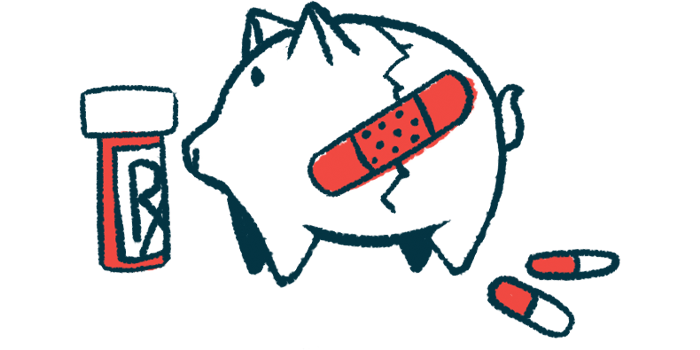NIH Study: Cost of Treating Rare Diseases ‘Large’ Relative to Other Ills

A retrospective study by the National Institutes of Health (NIH) suggests that healthcare costs for those with rare diseases have been underestimated, possibly being three to five times higher than for those without rare diseases.
This study provides evidence of the potential effect rare diseases may have on public health and healthcare systems, and suggests that patients’ medical costs might be on par with those for cancer and heart failure.
“There needs to be greater public awareness of the large and growing medical footprint of rare diseases in society,” Anne Pariser, MD, director of the NIH’s National Center for Advancing Translational Sciences (NCATS) Office of Rare Diseases Research and the study’s senior author, said in a press release.
“Only about 10% of rare diseases have an FDA-approved therapy for their treatment. The findings underscore an urgent need for more research, and earlier and more accurate diagnoses of and interventions for these disorders,” Pariser added.
The study, “The IDeaS initiative: pilot study to assess the impact of rare diseases on patients and healthcare systems,” was published in the Orphanet Journal of Rare Diseases.
Researchers looked at the medical costs of those diagnosed with 14 representative rare diseases, as compared to patients of a similar age diagnosed with non-rare diseases (a control group). Its main goals were to estimate the prevalence for these diseases in four different healthcare system (HCS) databases, including the Eversana HCS and the NCATS database, and to identify the average direct cost estimate per disease.
The 14 selected rare diseases represent a range of disorders that differ in prevalence, organ systems affected, age of onset, clinical course, and availability of an approved treatment.
Disease prevalence was calculated by using the international classification of disease (ICD) codes for rare diseases, and disease percentages by comparing those with rare diseases to the entire HCS database.
Results showed that disease percentages were quite variable across the different HCS, and for many diseases, the NCATS analysis seemed to show higher percentages of patients with rare diseases, as compared to the Eversana database.
According to the team, these findings may be partially explained by the different populations represented by each database.
“Many RD [rare diseases], especially genetically-based RD, are known to cluster within certain populations and the variable findings may merely show clustering of populations within certain geographic areas or HCS,” the researchers wrote.
Additionally, they noted that certain rare disease patients may have limited mobility and/or an inability to work, forcing reliance on public insurance programs for access to healthcare, which may help to explain the higher percentages in the NCATS database.
Regarding the average direct cost estimates per disease, using the NCATS and Eversana databases and then comparing to age-matched controls without a rare disease, researchers found that the average rare disease costs were 1.5- to 23.9-times higher when compared to costs for patients with non-rare diseases.
Of note, direct medical costs were estimated by averaging the per patient cost by disease, and total direct costs were estimated by adding the average per patient cost over the time period.
The nationwide Eversana HCS database estimates, from 2006–20, per patient per year ranged from $8,812 to $140,044 for rare disease patients versus $5,862 for the control group. (This database includes both public and private health insurance coverage.)
NCATS estimates, calculated mainly using a Medicaid database for the state of Florida from 2007–12, ranged from $4,859 to $18,994 for rare disease patients versus $2,211 for the control group. (Medicaid is a government-sponsored insurance program in the U.S.)
Across both databases, the cost per patient per year was higher for rare disease patients than for those with a non-rare disease, being “around three- [to] fivefold higher than age-matched controls,” the researchers wrote.
When the team made a gross extrapolation of average cost estimates for the approximately 25 million individuals with a rare disease in the United States, total yearly direct medical costs for rare diseases were in the range of $400 billion a year, “making the cost burden similar to other high-cost diseases, such as cancer and heart failure, and exceeding those of Alzheimer’s disease,” they wrote.
Nonetheless, when researchers calculated the total costs by rare disease within the time period analyzed — by multiplying the number of patients with that particular disease (or control disease) by average disease costs — a higher average cost for non-rare disease patients than any individual rare disease per year was seen.
“The reasons for generally lower total costs per disease [versus] control is likely due to the small number of patients per disease, despite the high average costs PP [per patient] for RD [rare disease],” the researchers wrote.
To better understand the diagnostic journey for patients with a rare disease, the team looked at records documenting key medical events, diagnosis, and treatment of four people with one of two diseases, Batten disease (BD) and cystic fibrosis (CF). These diseases were selected because they have available, disease-modifying therapies, allowing for an evaluation of patients’ clinical course pre- and post-treatment.
A long journey towards a definitive diagnosis after first clinical presentation was apparent, which could result in “progressive, irreversible, and costly complications of their disease,” the researchers wrote.
Interestingly, the team noted that rare disease patients often share a consistent group of symptoms (such as infections or seizures) and characteristics (such as early persistent and progressive signs) that could be used, through machine learning techniques, to establish disease patterns that could potentially allow for a faster diagnosis and earlier treatment.
“Ultimately, to improve the lives of people with rare diseases … we need to find innovative ways, including new technologies, to help shorten the lengthy diagnostic odysseys so many patients and families experience and make more treatments available faster,” said Joni L. Rutter, PhD, NCATS acting director and a study co-author.
Overall, the researchers concluded that rare diseases “have high medical burdens to patients and HCS, and collectively represent a major impact to the public health.”
They suggested that “machine-learning strategies applied to HCS databases and medical records using sentinel disease and patient characteristics may hold promise for faster and more accurate diagnosis for many RD patients and should be explored to help address the high unmet medical needs of RD patients.”







